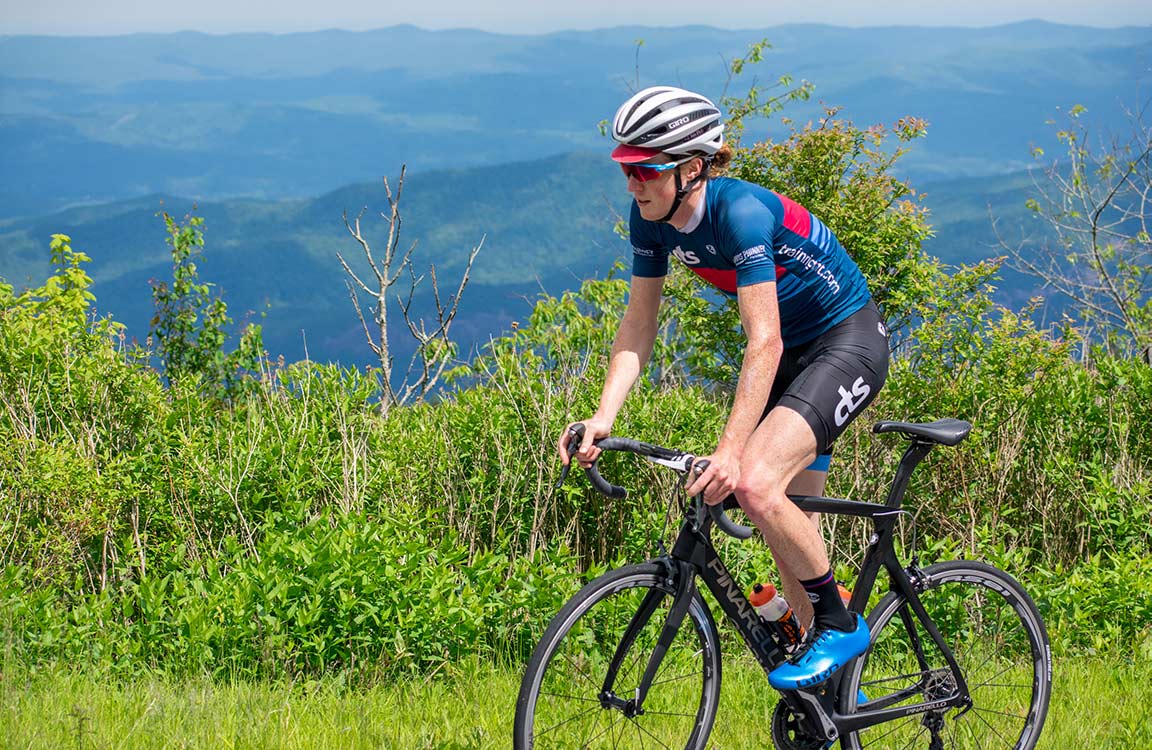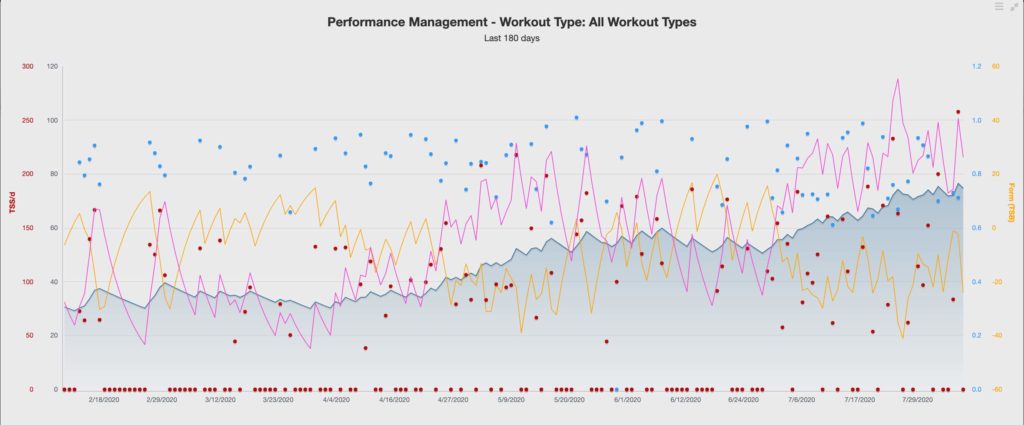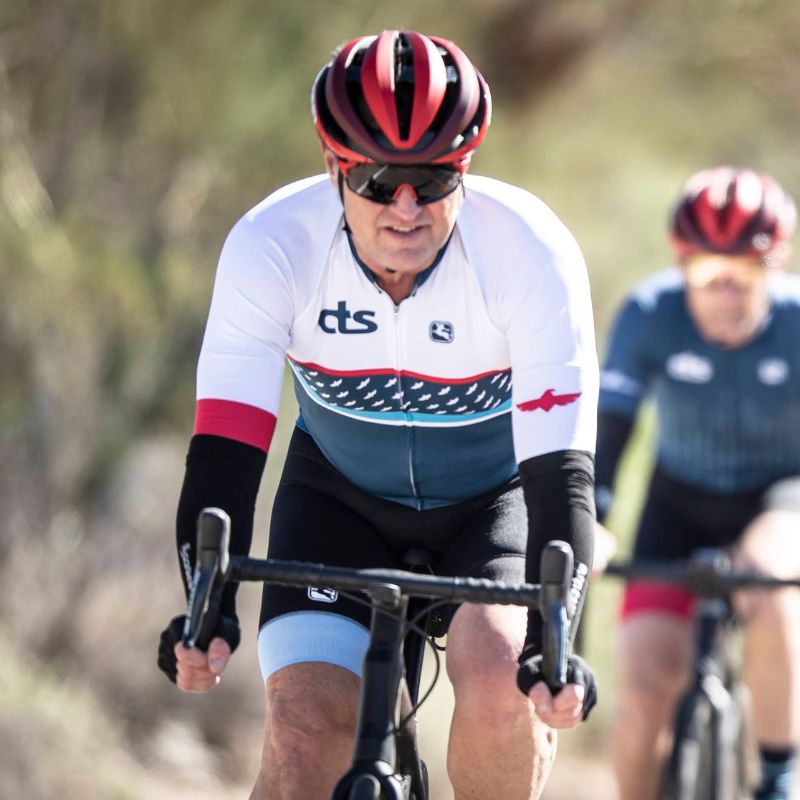
How to Break Through a Cycling Training Plateau
By Chris Carmichael
CEO/Head Coach of CTS
The summer of 2020 has been unusual, to say the least. For cyclists, the widespread cancellation of events has led to increased weekly and monthly riding volume, both in terms of time and mileage. This may sound counterintuitive, but in the absence of events, riders are training more consistently week in and week out, rather than the build-up-then-taper pattern seen during a season filled with events. Several months into this all-training, no-racing period, however, many riders are finding themselves stuck in a training plateau.
Initially, riding more hours and more miles yielded increased fitness, and my coaches and I have seen cyclists ratchet up their personal bests all summer: New peak power outputs, new records on local climbs, new heights in power at lactate threshold and power-to-weight ratio. But more riding only leads to more fitness for a limited period, and then you have to change up the type and pattern of training to continue making progress.
If you have been training consistently and you are no longer seeing measurable improvements, try making the following adjustments.
Adjustment #1: Increase “Time-at-Intensity”
What happens to a lot of athletes is that once you establish your schedule for training times (mornings, after-work, etc.), your weekly training workload may become stagnant. When the pandemic hit, it shook up people’s personal and professional schedules and, in many cases, shuffled riders’ normal training times. Those have largely settled at this point, and while consistency is good, stagnation is not.
In order to keep pushing forward, you either have to increase training stress so your body has something to adapt to. Most likely you can’t add more hours, and turning every ride into an all-out suffer-fest takes all the specificity out of training. Apply more precision and look at increasing your “time-at-intensity” for lactate threshold work and VO2 max intervals. If you accumulated 60 minutes at LT across a week of your generalized rides and interval workouts, aim to increase that to 70. If you spent 30minutes at VO2 max intensities, aim to get to 35minutes. This way, within the same weekly training hours you can increase the time spent at workloads that will produce training adaptations.
Adjustment #2: Focus on Speed
Speedwork is a good way to break out of a plateau – or avoid one in the first place. A lot of athletes have been riding a ton of miles and hours this summer, but all at a moderate to moderately-challenging intensities. Without events, there hasn’t been much of a sense of urgency about creating the fitness to go fast. So, riders have great aerobic endurance and diesel-engine performance to grind along at lactate threshold power, but they have no snap and no agility to change speeds quickly. One workout that I like to use to liven up a training program and develop great power for accelerations is SpeedIntervals:
How to do a SpeedInterval Workout:
The interval set is: 30-second sprint, 30-seconds recovery, repeated for six minutes. In other words, start by rolling at around 15mph in the big chainring and a moderate gear on the cassette. Sprint for 30 seconds, then ease up and spin lightly as you gradually slow down over 30 seconds. Then sprint again. Spin down. Sprint. Spin down, etc. Spin easy for 5 minutes and then repeat the 30sec/30sec x 6 minutes SpeedInterval set. For a moderately fit rider I like to incorporate 2 sets into a workout. Advanced riders can do 3 or 4 sets in a workout. You can also make the sets longer, like a 30sec/30sec x 8 minutes. When will you feel the benefit of this workout? When you’re getting up to speed coming out of a corner, getting out of the saddle to charge a short hill, or transitioning from down to up in rolling hills.
Adjustment #3: Make sure you’re not over-doing it
The first two tips deal with increasing your training stimulus, but athletes also have to consider the option that their workload is high but their recovery is not adequate. Months of consistent training is a wonderful advantage for any athlete, but as the weeks pile up, some athletes forget to build in enough time to rest.
This summer, in particular, I’ve noticed this phenomenon with athletes who are relatively new to tracking their training progress. In the past, riders tracked progress by how they performed in local group rides or how they felt at events. Without those benchmarks, people are looking more closely at their “Fitness and Freshness” values in Strava or their “Chronic Training Load”* in TrainingPeaks’ Performance Management Chart. Both of these line graphs tick upward when you add training stress, and slide downward when you rest. As you improve your fitness over a period of weeks and months, the line gradually ratchets upward.
► Free Cycling Training Assessment Quiz
Take our free 2-minute quiz to discover how effective your training is and get recommendations for how you can improve.
When athletes get too engrossed in seeing “Fitness and Freshness” or CTL lines continue to ratchet upward, they will sometimes prioritize working out (adding training stress) over recovery. On the graphs, resting for 2-3 days can look disheartening because “fitness” immediately starts to regress. Athletes who can’t stand to see the line tip downward, even for a few days, go out and pile on more training stress.

Fig 1. As Chronic Training Load (blue line, thought of as ‘fitness’) ratchets up with the addition of training stress (red dots), days of rest are needed but can also cause anxiety because people see the CTL line tip downward. But that dip is necessary in order to create the adaptations necessary to achieve the subsequent improvements.
To take a bigger step forward, it is important to give yourself a long enough pause to rest and adapt to the work you have already done. If your progress has stalled, a two-week period of active recovery (shorter, easier rides), along with a focus on sleep quality and quantity will set you up for a big jump in performance over the weeks that follow. When you return to full-length, productive training sessions you will be able to do more work and sustain higher power outputs, which will increase your weekly training workload within the same number of training hours.
Looking to the Future
The longer this pandemic-forced break in events lasts, the more convinced I am that we will see a tremendous improvement in competitive performances in 2021. So many athletes have been able to bank an entire season of consistent training and stepped up a level in aerobic endurance and peak power output. When events start up and we layer in the high-intensity, event-specific training to achieve competitive fitness, people are going to achieve performances they never thought possible.
* Chronic Training Load is a trademark of TrainingPeaks, LLC.
► FREE Mini-Course: Learn How to Maximize Your Limited Training Time
Learn step-by-step how to overcome limited training time and get faster. Walk away with a personalized plan to increase your performance.
"*" indicates required fields

